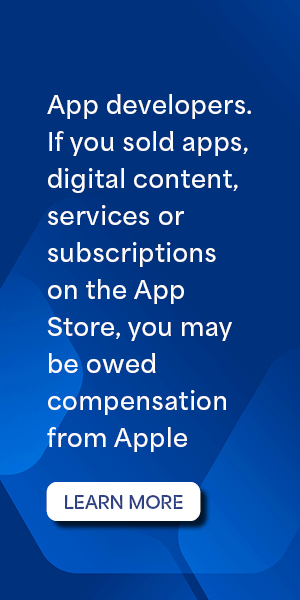Voximplant tells us about their cloud communications platform
Friday, December 9, 2016

|
Richard Harris |
Voximplant, a communications cloud platform for mobile and web app developers, has been working to improve audio and visual communications in real time. They provide the tools for developer to create their own web and mobile communication applications. We've sat down with Alexey Aylarov, the CEO of Voximplant to talk more about what their company is about and where the future of communications platform is going.
Aylarov: Most of the businesses we see benefiting from voice and video communication within their mobile apps are business-to-consumer (B2C) companies offering customer service and contact availability in real-time. Examples of use cases cut across industries; from our own experience we’re seeing particular interest from banks, airlines, delivery and taxi services, etc. Voice and video capabilities have also proven particularly valuable for Skype-like communication applications, as well as for educational apps.
Aylarov: One useful feature is that advanced cloud communications platforms can connect and disconnect voice and video in real-time. It’s something we made a priority for our platform. This functionality sets the stage for using a wide set of clever new communications techniques – for example, the operator can click a button to play a pre-recorded message within the call, giving the customer the illusion that he or she is always communicating with same person.
Another important functionality is the fact that the quality of voice recognition has improved a lot in the last few years. Voice IVR and automated communications have really gotten to the point where developers and businesses ought to be taking advantage of them in almost all use cases.
Aylarov: Three things stand out. One, it’s critical that app developers know to pay close attention to network latency and timeouts. This could make-or-break usability. Second, developers should also be sure to use device-specific push notifications when they signal a call. And third, they can also preserve battery by choosing a hardware-accelerated video encoder and decoder, which end users will similarly appreciate. There are certainly others, but it’s particularly important not to lose sight of those three.
Aylarov: Speech recognition is a multi-purpose solution that can really provide different benefits depending on the scenario, from big data analysis of user voice communications, to powering a cloud-based personal assistant, to IVR solutions that don’t require a phone keypad but instead recognize what the user is saying.

Aylarov: Our cloud communications platform has been created as “programmable” from scratch. We began by asking, “What is the best way for a web developer to control voice and video calls?” To answer the question, we created a cloud JavaScript engine called “VoxEngine” that makes it possible to run a client’s JavaScript code in parallel with a call and control the call in real-time. All parts of our platform – HTTP API, Web SDK, Mobile SDK, etc. – have been created from scratch based on input from the use cases of real-life app developers. This means we don’t have any “legacy” and “compatibility” issues, and believe we can offer a best-of-class experience for app developers using the platform.
Aylarov: Our latest additions include support for Microsoft Edge, as well as new voice recognition capabilities that were created in partnership with Google. Right now we are working on a Messaging API revamp, screen sharing functionality, and Unity support. Stay tuned!
Aylarov: With the rise of cloud-based communications platforms like Voximplant, we see a shift from traditional cellular voice calls to mobile clients that use an internet connection and cloud backend for communication and call handling logic. Voice communication is becoming much, much more automated – to the degree that you can’t always tell anymore if you’re speaking with a live person or clever voice recognition system. Such app-based communication enables companies to provide a new level of service, where calls are answered instantly, and a lot of communication tasks are handled automatically.
ADM: What sorts of mobile apps benefit from the addition of voice and video communications?
Aylarov: Most of the businesses we see benefiting from voice and video communication within their mobile apps are business-to-consumer (B2C) companies offering customer service and contact availability in real-time. Examples of use cases cut across industries; from our own experience we’re seeing particular interest from banks, airlines, delivery and taxi services, etc. Voice and video capabilities have also proven particularly valuable for Skype-like communication applications, as well as for educational apps.
ADM: What are some under-utilized but advantageous voice and video call functionalities that developers should know more about?
Aylarov: One useful feature is that advanced cloud communications platforms can connect and disconnect voice and video in real-time. It’s something we made a priority for our platform. This functionality sets the stage for using a wide set of clever new communications techniques – for example, the operator can click a button to play a pre-recorded message within the call, giving the customer the illusion that he or she is always communicating with same person.
Another important functionality is the fact that the quality of voice recognition has improved a lot in the last few years. Voice IVR and automated communications have really gotten to the point where developers and businesses ought to be taking advantage of them in almost all use cases.
ADM: What should a mobile app developer know going in when proceeding with a project that includes voice and video communication features?
Aylarov: Three things stand out. One, it’s critical that app developers know to pay close attention to network latency and timeouts. This could make-or-break usability. Second, developers should also be sure to use device-specific push notifications when they signal a call. And third, they can also preserve battery by choosing a hardware-accelerated video encoder and decoder, which end users will similarly appreciate. There are certainly others, but it’s particularly important not to lose sight of those three.
ADM: What role does speech recognition technology play in the development of app-based communication solutions?
Aylarov: Speech recognition is a multi-purpose solution that can really provide different benefits depending on the scenario, from big data analysis of user voice communications, to powering a cloud-based personal assistant, to IVR solutions that don’t require a phone keypad but instead recognize what the user is saying.

ADM: Voximplant is “designed by and built for developers.” How specifically does it simplify or enhance the development of apps featuring cloud-based communication?
Aylarov: Our cloud communications platform has been created as “programmable” from scratch. We began by asking, “What is the best way for a web developer to control voice and video calls?” To answer the question, we created a cloud JavaScript engine called “VoxEngine” that makes it possible to run a client’s JavaScript code in parallel with a call and control the call in real-time. All parts of our platform – HTTP API, Web SDK, Mobile SDK, etc. – have been created from scratch based on input from the use cases of real-life app developers. This means we don’t have any “legacy” and “compatibility” issues, and believe we can offer a best-of-class experience for app developers using the platform.
ADM: What’s upcoming for Voximplant in the near future?
Aylarov: Our latest additions include support for Microsoft Edge, as well as new voice recognition capabilities that were created in partnership with Google. Right now we are working on a Messaging API revamp, screen sharing functionality, and Unity support. Stay tuned!
ADM: What trends do you see in the adoption of app-based voice and video communication? What do you anticipate looking forward?
Aylarov: With the rise of cloud-based communications platforms like Voximplant, we see a shift from traditional cellular voice calls to mobile clients that use an internet connection and cloud backend for communication and call handling logic. Voice communication is becoming much, much more automated – to the degree that you can’t always tell anymore if you’re speaking with a live person or clever voice recognition system. Such app-based communication enables companies to provide a new level of service, where calls are answered instantly, and a lot of communication tasks are handled automatically.

Become a subscriber of App Developer Magazine for just $5.99 a month and take advantage of all these perks.
MEMBERS GET ACCESS TO
- - Exclusive content from leaders in the industry
- - Q&A articles from industry leaders
- - Tips and tricks from the most successful developers weekly
- - Monthly issues, including all 90+ back-issues since 2012
- - Event discounts and early-bird signups
- - Gain insight from top achievers in the app store
- - Learn what tools to use, what SDK's to use, and more
Subscribe here













